Calcium-mediated paired pulse depression in juvenile rat dorsal striatum
- PMID: 25737701
- PMCID: PMC4345660
- DOI: 10.3969/j.issn.1673-5374.2012.10.008
Calcium-mediated paired pulse depression in juvenile rat dorsal striatum
Abstract
As the major division of the basal ganglia, neostriatum forms mutual connections with multiple brain areas and is critically involved in motor control and learning/memory. Long-term synaptic plasticity has been widely studied in different species recently. However, there are rare reports about the short-term synaptic plasticity in neostratium. In the present study, using field excitatory postsynaptic potentials recording, we reported one form of short-term synaptic plasticity that is paired pulse depression in juvenile rat dorsal striatum slices induced by stimuli of the white matter. The field excitatory postsynaptic potentials could be abolished by α-amino-3-hydroxy-5-methylizoxazole-4-propionic acid receptor antagonist, 6-cyano-7-nitroquinoxaline-2,3-dione, but not by gamma-aminobutyric acid type A receptor antagonist bicuculline or dopamine D1 receptor antagonist SKF-81297. The paired pulse depression in the corticostratial pathway was different from paired pulse facilitation in the hippocampal CA1 synapse. In addition, the paired pulse depression was not affected by bath application of gamma-aminobutyric acid type A receptor antagonist or dopamine D1 receptor antagonist. However, low calcium and high magnesium could attenuate the paired pulse depression. These findings suggest a more complicated plasticity form in the dorsal striatum of juvenile rats that is different from that in the hippocampus, which is related with extracellular calcium.
Keywords: calcium; dorsal striatum; juvenile rats; paired pulses depression.
Conflict of interest statement
Figures
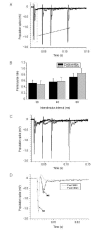
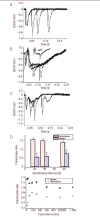
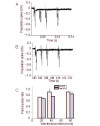
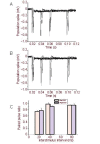
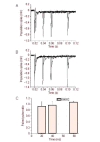

Similar articles
-
Regulation of EPSPs by the synaptic activation of GABAB autoreceptors in rat hippocampus.J Physiol. 1996 Oct 15;496 ( Pt 2)(Pt 2):451-70. doi: 10.1113/jphysiol.1996.sp021698. J Physiol. 1996. PMID: 8910229 Free PMC article.
-
Hippocampal CA1 lacunosum-moleculare interneurons: modulation of monosynaptic GABAergic IPSCs by presynaptic GABAB receptors.J Neurophysiol. 1995 Nov;74(5):2126-37. doi: 10.1152/jn.1995.74.5.2126. J Neurophysiol. 1995. PMID: 8592201
-
The physiological regulation of synaptic inhibition by GABAB autoreceptors in rat hippocampus.J Physiol. 1993 Dec;472:245-65. doi: 10.1113/jphysiol.1993.sp019945. J Physiol. 1993. PMID: 8145143 Free PMC article.
-
Volatile anesthetics depress glutamate transmission via presynaptic actions.Anesthesiology. 1996 Oct;85(4):823-34. doi: 10.1097/00000542-199610000-00018. Anesthesiology. 1996. PMID: 8873553
-
Role of giant depolarizing potentials in shaping synaptic currents in the developing hippocampus.Crit Rev Neurobiol. 2006;18(1-2):13-23. doi: 10.1615/critrevneurobiol.v18.i1-2.30. Crit Rev Neurobiol. 2006. PMID: 17725505 Review.
Cited by
-
The effect of sevoflurane on the cognitive function of rats and its association with the inhibition of synaptic transmission.Int J Clin Exp Med. 2015 Nov 15;8(11):20853-60. eCollection 2015. Int J Clin Exp Med. 2015. PMID: 26885010 Free PMC article.
References
-
- Smith AD, Bolam JP. The neural network of the basal ganglia as revealed by the study of synaptic connections of identified neurones. Trends Neurosci. 1990;13(7):259–265. - PubMed
-
- Di Filippo M, Picconi B, Tantucci M, et al. Short-term and long-term plasticity at corticostriatal synapses: implications for learning and memory. Behav Brain Res. 2009;199(1):108–118. - PubMed
-
- Partridge JG, Tang KC, Lovinger DM. Regional and postnatal heterogeneity of activity-dependent long-term changes in synaptic efficacy in the dorsal striatum. J Neurophysiol. 2000;84(3):1422–1429. - PubMed
LinkOut - more resources
Full Text Sources
Research Materials
Miscellaneous
